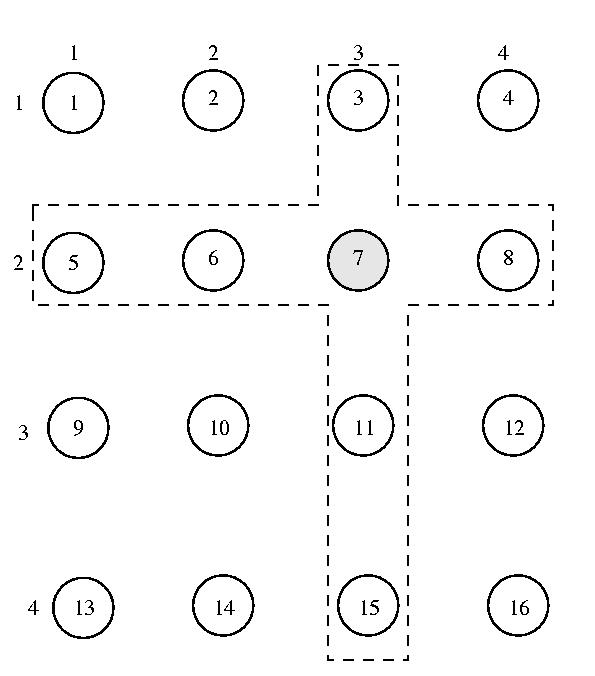Coteries is a political term that suggests a closed, somewhat intimate, and conspiring collection of actors (persons, states, trade organizations, unions, &c), e.g. a "Boy's Club".
This can be accomplished by requiring that elections within any district be won by unanimous vote and then Gerrymandering each processor's district to ensure that all districts intersect. Since the subset of processors that are members of more than one district can't vote twice, they ensure that only one of the districts can gain a unanimous vote.
Gerrymandering is a term that was coined by Federalists in the Massachusetts election of 1812. Governor Elbridge Gerry, a Republican, won a very narrow victory over his Federalist rival in the election of 1810. In order to improve their party's chances in the election of 1812, he and his Republican conspirators in the legislator redrew the electoral districts in an attempt to concentrate much of the Federalist vote into very few districts, while creating narrow, but majority, Republican support in the others.The resulting districts were very irregular in shape. One Federalist commented that one among the new districts looked like a salamander. Another among his cohorts corrected him and declared that it was, in fact, a "Gerrymander." The term Gerrymandering, used to describe the process of contriving political districts to affect the outcome of an election, was born.
Incidentally, it didn't work and the Republicans lost the election. He was subsequently appointed as Vice-President of the U.S. He served in that role for two years. Since that time both federal law and judge-made law have made Gerrymandering illegal.
The method of Gerrymandering disticts that we'll study was developed by Maekawa and published in 1985. Using this method, processor's are organized into a grid. Each processor's voting district contains all processors on the same row as the processor and all processors on the same column. That is to say that the voting district of a particular processor are all of those systems that form a perpendicular cross through the processor within the grid. Given N nodes, 2*SQRT(n) - 1 nodes will compose each voting district.
Using this approach, any pair of voting districts will intersect via at least one node, so two disticts cannot be one unanimously at the same time.

Here's what a node does, if it wants to enter the critical section:
- Send a REQUEST to every member of its district
- Wait until every member of its district votes YES
- Enter the critical section
- Upon exit from the CS, send RELEASE to each member of its district.
If a node gets a REQUEST, it does the following:
- If it has already voted in an outstanding election (it voted, but hasn't received a corresponding RELEASE), enqueue the request.
- Otherwise send YES
If a node gets a RELEASE:
- Dequeue oldest request from its queue, if any. Send a YES vote to this node, if any.
As we saw with simple majority voting last class, this approach can deadlock if requests arrive in a different order at different voters. This can allow different voters within overlapping districts to vote for different candidates. In particular, it can allow for a "split" between the two voters that are the overlap between two districts.
Fortunately, we can use the same approach we discussed last class to recover from this situation if it becomes problematic:
- A node records Lamport time w/total ordering before it sends a request. It sends this time with the request to all members of its district (the same time).
- Each voter uses a priority queue based on the time of the request.
- If a node receives a request with a time-stamp more older than the
timestamp of a request for which it already voted, but for which
it has not received a RELEASE, it attempts to cancel its vote. It
does this by sending the candidate an INQUIRE.
If this node hasn't won the election, it forgets about our vote and sends us a RELINQUISH. Once we receive the RELINQUISEH, we vote for the older request and enqueue the candidate for which we originally voted.
If the candidate was already in the CS, no harm was done -- deadlock did not actually occur. When it goes out, we can vote for the other candidate. In this case, the processors may not have entered the CS in FIFO order, but that's okay -- deadlock didn't happen.
This approach requires about 3*(2*SQRT(N)-1) messages -- much nicer than 3*N messages. But it is not very fault tolerant, since a unanimous victory is required within a district. (Some failure can be tolerated, since failures outside of a district don't affect a node).